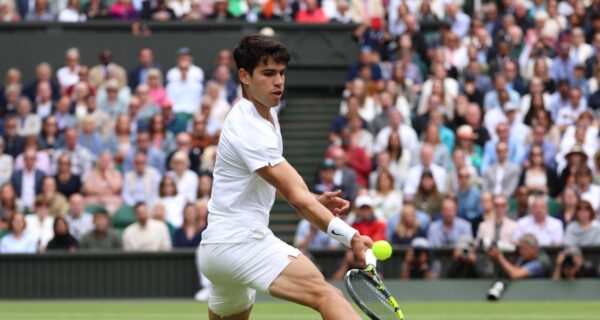Jannik Sinner’s ascent through the ranks of the ATP Tour has been anything but conventional. Still in his early twenties, the Italian has already established himself as one of the most formidable competitors on the circuit, known for his composed demeanor, powerful groundstrokes, and impressive court coverage.
But beyond the obvious elements of his game, a more subtle yet equally impactful feature is beginning to attract serious attention: his serve.
While many young players focus on raw power or high first-serve percentages, Sinner has developed a service game that prioritizes variation and unpredictability. His serve does not conform to the traditional rhythm most opponents expect — and that’s exactly where its strength lies.
This unpredictability is especially relevant when considering tennis in-play betting markets, where subtle shifts in tempo and momentum can dramatically influence live odds and betting decisions.
By continuously adjusting placement, spin, and speed, Sinner disrupts the established tempo of a match, throwing opponents off balance and forcing them to adapt point by point. This article explores how Sinner’s serve patterns are not just effective — they are transformational.
They challenge long-held assumptions about how momentum is built and sustained in men’s tennis. Furthermore, these unpredictable shifts in match dynamics don’t only affect players and coaches; they also reverberate through fan experience and the broader betting ecosystem.
Sinner’s Serve: A Departure from Convention
In professional tennis, serving has long followed certain tactical conventions. Most players rely heavily on their first serve, aiming for precision and power to dictate points early. Traditional patterns dominate: a flat serve out wide to open up the court, a kick serve to the backhand, or a slice down the T to neutralize aggressive returners.
These strategies are effective not only because of their execution but also because they create a rhythm — a predictable cadence that opponents learn to anticipate and respond to over the course of a match.
Jannik Sinner, however, is quietly rewriting this script.
Rather than relying on brute force or fixed routines, Sinner brings a level of nuance to his service game that distinguishes him from many of his peers. He frequently mixes up pace — alternating between 120 mph bullets and slower, more deliberately placed serves — and is unafraid to go against conventional choices, even on high-pressure points. He will serve to the body when least expected or direct a second serve flat and wide rather than using the safer kick option.
Statistical analysis supports this departure from the norm. Sinner shows a significantly higher-than-average variation in his second-serve direction compared to the tour median. He also uses body serves — particularly on deuce points — more frequently than most top-10 players. This variability keeps returners guessing and disrupts the internal rhythm they rely on to time returns, especially during prolonged service games.
The result is a kind of psychological discomfort for opponents. Many returners thrive on repetition and predictable tempo to build confidence — Sinner actively denies them that. His ability to shift serve patterns from game to game prevents players from settling, forcing them into a reactive mindset.
This unpredictability not only undermines their consistency but also gives Sinner greater control over the momentum of the match, even when his serve velocity is not overpowering.
In a sport where marginal differences define winners, Sinner’s unorthodox approach to serving has become a strategic advantage that disturbs the foundations of conventional match rhythm.
Impact on Match Flow and Opponent Psychology
In tennis, match flow is often dictated by subtle elements: timing, rhythm, and the ability to read patterns. When a server maintains a consistent routine and shot selection, returners gradually adapt, gaining confidence with each read.
However, Jannik Sinner’s approach to serving short-circuits this process. His deliberate disruption of rhythm makes it difficult for opponents to “settle in,” breaking the psychological pattern recognition that many players depend on.
Sinner’s match against Novak Djokovic at the 2023 ATP Finals offers a compelling case study. Against one of the greatest returners in the sport, Sinner frequently altered his service strategies — varying between wide serves, body shots, and surprising second-serve risks.
This unpredictability forced Djokovic to hesitate, costing him key points in extended rallies and allowing Sinner to maintain control during critical service games. Similarly, against Daniil Medvedev — a player known for his deep return position and rhythm-based counterpunching — Sinner’s serve variation frequently neutralized Medvedev’s strengths, disrupting his timing and limiting his ability to dictate play.
For opponents, this lack of consistency translates into frustration. The mental toll of constantly recalibrating to a serve with no discernible pattern adds pressure that goes beyond the physical. Returners not only have to anticipate the ball’s placement but also second-guess their own instincts — a distraction that accumulates over a best-of-three or best-of-five match.
This effect extends beyond the players to the broader viewing experience. For commentators and analysts, Sinner’s unpredictable serving style adds a new layer of complexity to live coverage.
It challenges traditional narratives about momentum and control, forcing real-time reassessment of which player has the upper hand. Fans, too, become more engaged in these moments of uncertainty, where outcomes are not easily forecast.
From a broader perspective, this volatility has implications for betting markets, where rapid shifts in momentum directly influence live odds. Sinner’s service games, being harder to evaluate and predict, contribute to more dynamic fluctuations — reinforcing the sense that each point truly matters. His style doesn’t just disrupt his opponents — it reshapes the entire rhythm of the match.
Key Ways Sinner’s Serve Disrupts Opponent Rhythm
Jannik Sinner’s ability to unsettle his opponents begins with how he dismantles the rhythm and predictability that returners often rely on. Below are several key elements of his service game that contribute to this disruption:
- Unpredictable placement, including unexpected body serves: Unlike many players who favor wide or T serves on key points, Sinner frequently targets the body — especially when it’s least expected. This forces returners into awkward positions, reducing their ability to generate offensive returns or regain control of the rally.
- Occasional underpowered first serves for tactical variation: Sinner sometimes opts for a slower first serve, not due to hesitation but by design. These serves disrupt the timing of opponents expecting pace and open opportunities for aggressive follow-up shots. The subtle change can throw off even experienced returners.
- No clear serve “pattern” on break or game points: Most players develop reliable tendencies under pressure — serving wide on deuce points, for example. Sinner defies these norms. On crucial points, he varies both direction and spin, making it impossible to anticipate his intentions and increasing the psychological pressure on returners.
- Mix of spin and flat deliveries throughout the match: By blending heavy topspin second serves with occasional flat deliveries, Sinner ensures that no two consecutive serves feel the same. This variety makes timing the return difficult and prevents the opponent from adjusting comfortably.
- Change of pace used deliberately to stall opponent anticipation: Sinner’s changes in pace — particularly mid-game — are often used to break an opponent’s growing rhythm. A sudden shift to a slower delivery after a series of faster ones acts as a reset button, halting the returner’s momentum and forcing them to recalibrate with every point.
Wider Implications: From Strategy to Betting Markets
Jannik Sinner’s unorthodox serve patterns are not just a tactical tool — they are a source of broader disruption across the sport. By breaking from conventional serving rhythms, he introduces a level of unpredictability that impacts how matches are forecast, analyzed, and even experienced in real time.
This volatility can alter not only the course of individual games but also broader expectations around match momentum.
For tennis analysts and fans who track live dynamics serve reliability has traditionally been one of the most stable indicators of momentum. A player with a dependable first serve and a predictable rhythm is often expected to hold serve consistently, which supports confident predictions.
Sinner, however, challenges this baseline assumption. His deliberate variability creates doubt around each service point, which in turn increases the fluctuation of live betting odds and makes forecasting more reactive than predictive.
During his matches, in-play odds can shift dramatically even mid-game, especially when he deviates from expected serve choices on high-pressure points. What might normally be considered a safe hold becomes an open-ended scenario, keeping both viewers and bookmakers in a state of constant adjustment.
For bettors and platforms alike, Sinner’s matches represent a new layer of complexity — one where psychological gamesmanship plays a visible role in quantitative markets.
The implications also extend to coaching and player development. As Sinner’s approach proves successful, it raises a tactical question: can this serve unpredictability be taught, or effectively defended against? Coaches may now need to prepare players not only to recognize serve patterns but to adapt to an absence of them.
In this way, Sinner’s evolving service game isn’t just a personal advantage — it may signal a broader evolution in how tennis is played, watched, and wagered upon.
Conclusion
Jannik Sinner’s evolving service strategy represents a quiet but significant shift in modern tennis dynamics. By rejecting predictable serve routines in favor of strategic variation, he undermines one of the sport’s most fundamental assumptions: that rhythm can be established and controlled over time. His approach unsettles opponents, challenges traditional momentum models, and adds new dimensions to live match analysis.
In a game where the margins between victory and defeat are razor-thin, controlling rhythm has become just as critical as hitting with power or precision. Sinner’s serve doesn’t just win points — it disrupts expectations, both on court and off.
For coaches, analysts, and fans — especially those watching tennis in-play betting markets — his unpredictable patterns demand new ways of thinking about momentum and strategy.
As the sport continues to evolve, Sinner’s innovations may mark the beginning of a broader shift: a new era where tactical disruption replaces repetition as the foundation of success.












